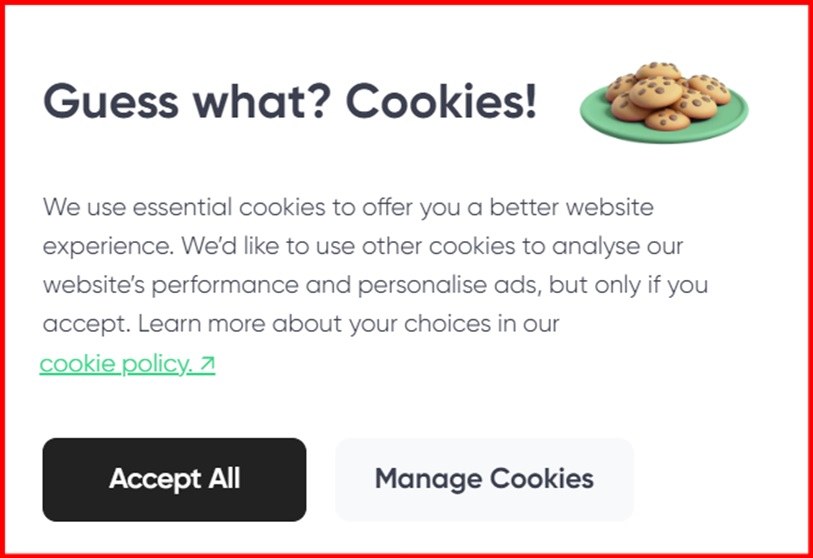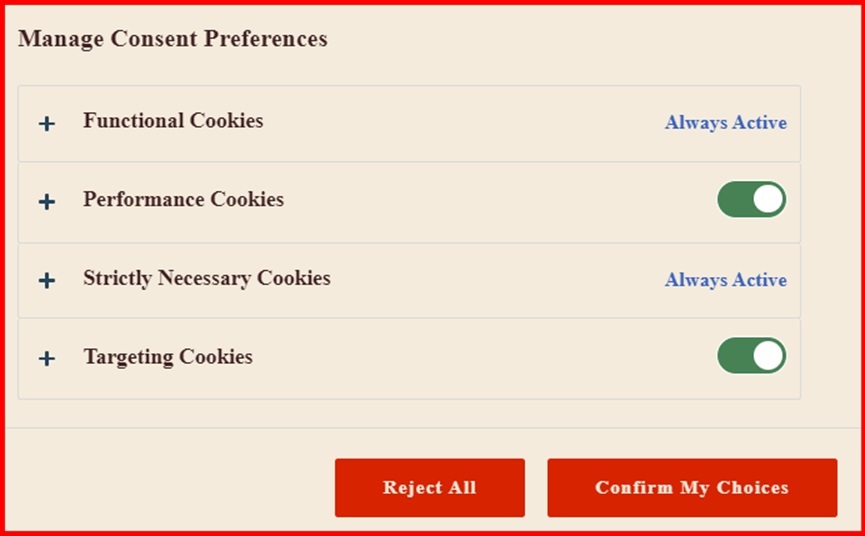Consent for Google Ads Personalization
If you plan on running personalized Google Ads for your business, one thing you'll need to familiarize yourself with is the rules around Consent.
Google Ads Personalization involves tailoring ads to individual users based on their online behavior and preferences. This can significantly improve the effectiveness of your ads, but it also requires obtaining explicit Consent from users.
In this article, we'll help you understand what Google Ads Personalization consent is, why it's important, and how to comply with the necessary regulations.
What is Google Ads Personalization Consent?
Google Ads Personalization Consent is the explicit permission you must obtain from users to collect and use their data for tailored advertising. This consent ensures that users are fully aware of how their personal information, such as browsing history and search behavior, will be utilized to deliver more relevant ads.
What Does Consent for Google Ads Personalization Entail?
As of March 2024, significant changes were implemented for businesses running Google Ads that use personalization in the EU and the UK.
You need to ensure that you obtain proactive consent from users before placing any non-essential cookies on their devices. This means that users must actively opt-in, rather than assuming consent from their continued use of the site.
The most immediate change is the requirement to share consent signals with Google. This means transmitting users' consent choices to Google, allowing them to distinguish between those who consent to data sharing for advertising purposes and those who do not.
Without sharing these consent signals, you will not be able to use key features of Google Ads, such as measurement, ad personalization, and remarketing, nor will you be able to pass Google Analytics data into other Google services.
Therefore, it's crucial to set up Consent Mode via a Consent Management Platform to continue utilizing these features effectively.
How to Comply with Google Ads Personalization Consent
Complying with Google Ads Personalization consent involves several steps to ensure you gather and manage user consent properly.
Here's a step-by-step guide to help you through the process.
1. Implement a Consent Management Platform (CMP)
The first step is to implement a Consent Management Platform (CMP) on your website.
A Consent Management Platform (CMP) helps websites handle user consent for personal data processing in an efficient and compliant manner. It streamlines the process of obtaining, managing, and storing user consent, ensuring transparency and adherence to privacy regulations.
With a CMP, you can display a Cookie Consent banner that asks users for their consent before collecting any non-essential data.
Here's an example of a Cookie banner:

This banner supports detailed consent choices through its "Manage Cookies" option, allowing users to decide which types of data they are comfortable sharing.
One of the key features of a CMP is its ability to automatically detect and block cookies until the user gives their consent. It regularly scans your website to keep the cookie list up to date, ensuring ongoing compliance. The CMP then records user consent preferences and shares this information with third-party services and vendors, such as Google Analytics and advertising partners.
Once user consent is obtained, a CMP securely stores this information in a central database. This acts as Proof of Compliance during any regulatory audits.
For websites using Google publisher products, implementing a Google-certified CMP by January 16, 2024, became mandatory to continue serving personalized ads in the EEA and UK. This requirement ensures that all user consent collection meets the necessary legal standards, safeguarding both your business and your users.
You can find a list of compatible CMP partners here.
2. Customize Your Consent Notice
Customize the Consent notice provided by your CMP. Make sure it clearly explains what data will be collected, how it will be used, and who it will be shared with.
The notice should be easy to understand and include options for users to accept or reject different types of data collection. This could include options for essential cookies, marketing cookies, analytics, and more. Allow users to toggle these options on or off according to their preferences.
Here is an example of how it's done:

Ensure that users can also easily withdraw their consent at any time. Your CMP should provide a straightforward mechanism for opting out, such as a link in the Consent banner or a dedicated Privacy settings page.
Include a link to your full Privacy Policy within the Consent notice. This allows users to read more about your data practices and how their information will be handled.
3. Obtain Proactive Consent
Ensure that your Consent notice requires users to actively opt-in before any non-essential cookies are placed on their devices. This means users must click an "I agree" button or similar action to give their Consent. Do not assume Consent from continued site usage.
Here's an example:

In the above example, users can clearly see that some data is used to create profiles for personalized advertising and have the option to accept or reject the cookies.
4. Update Your Privacy Policy
Ensure your Privacy Policy is up-to-date and includes information about your data collection practices, the use of Google Ads Personalization, and how users can manage their Consent preferences.
Link to your Privacy Policy in your Consent banner for full transparency like seen here:
![]()
As for including personalized ad data in the Privacy Policy itself, here's an example of how you can include this in a policy:

It provides a general overview of how personal data is used for personalization, followed by a link that explains its data use in more detail.
You should clearly state in your own Privacy Policy how personal data is used for personalized Google Ads.
5. Enable Consent Mode and share consent signals with Google
Once you have fine tuned your Cookie banner and Privacy Policy, it's time to set up your CMP to share consent signals with Google. This involves configuring your CMP to pass user consent information to Google Ads.
By doing this, Google can differentiate between users who have consented to data sharing and those who have not, ensuring compliance with their requirements.
Once you have configured your CMP to share information with Google, you'll need to activate Consent Mode v2 in your Google Ads account. This mode adjusts how Google tags behave based on the consent status of your users. It helps you measure conversions and gather analytics data while respecting user consent choices.
Google provides a useful guide to activating its basic consent mode.
6. Regularly review and update
Regularly review your Consent management processes and update them as needed. Stay informed about changes in regulations and Google's policies to ensure ongoing Compliance. Make necessary adjustments to your CMP, Consent notices, and Privacy Policy to reflect any changes.
7. Educate Your Team
Ensure that your team understands the importance of Compliance with Google Ads Personalization Consent. Provide training on how to use the CMP, handle user data, and stay updated on Regulatory changes. A well-informed team is crucial for maintaining Compliance.
By following these steps, you can ensure that your business complies with Google Ads Personalization Consent requirements, respects user privacy, and continues to benefit from personalized advertising features.
What Happens if Users Reject Personalized Ad Cookies?
If a user chooses to reject personalized ad cookies, Google will revert to using Conversion Modeling.
Here's a description provided by Google to help you better understand how Conversion Modeling works:

Conversion modeling not only safeguards the privacy of those who prefer not to have their personal data used for marketing purposes, but it also gives you a more comprehensive understanding of your marketing performance. This can help to avoid under or overbidding on your ads.
The Consequences of Failing to Comply with Google Ads Consent
Failing to comply with Google Ads Personalization consent requirements can have significant repercussions for your business. You may experience:
- A loss of access to key features
- Legal penalties
- Reputational damage
- Decreased advertising effectiveness
- Financial losses
Loss of Access to Key Features
One of the immediate consequences of non-compliance is the loss of access to critical features of Google Ads. Without proper Consent management, you won't be able to use measurement, ad personalization, remarketing, or pass Google Analytics data into other Google services.
You will be met with the following alert through your Google Ads account if you are not fully compliant.
This can severely impact the effectiveness of your advertising campaigns and hinder your ability to reach your target audience effectively.
Legal Penalties
Non-compliance with GDPR and other Privacy Regulations can lead to substantial legal penalties. Regulatory authorities in the EU and UK can impose fines on businesses that fail to obtain and manage user consent correctly. These fines can be significant, potentially amounting to millions of euros, depending on the severity and nature of the violation.
Reputational Damage
Failing to comply with consent requirements can damage your business's reputation. Consumers are increasingly aware of their privacy rights and expect businesses to handle their data responsibly.
Non-compliance can lead to a loss of trust among your customers, resulting in negative publicity and a potential decline in customer loyalty and engagement.
Decreased Advertising Effectiveness
Without user consent, your ability to personalize ads and target specific audiences is greatly reduced. This can lead to less effective advertising campaigns, lower engagement rates, and decreased return on investment (ROI).
Personalized ads are more likely to resonate with users, and losing this capability can significantly impact your marketing performance.
Financial Losses
Beyond fines and legal fees, failing to comply can lead to broader financial losses. The combination of decreased advertising effectiveness, loss of customer trust, and business disruptions can all contribute to reduced revenue and increased costs. Maintaining compliance helps protect your bottom line and supports sustainable business growth.
To avoid these consequences, it is crucial to implement a comprehensive Consent Management Strategy, ensuring that you comply with Google Ads Personalization consent requirements and broader privacy regulations. This not only protects your business but also builds trust with your customers and enhances the effectiveness of your marketing efforts.
Conclusion
Understanding the complexities of Google Ads Personalization consent is essential for any business that aims to leverage personalized advertising while complying with Privacy Regulations. By understanding what Google Ads Personalization entails and ensuring you gather explicit user consent through a Consent Management Platform (CMP), you can continue to benefit from targeted advertising without risking legal repercussions.
Implementing a CMP not only helps you meet Regulatory requirements but also builds trust with your users by demonstrating a commitment to their privacy.
Staying compliant involves several steps, from customizing your Consent notices to sharing Consent signals with Google. These measures ensure that your advertising practices are transparent and respectful of user preferences. As Regulations continue to evolve, it's crucial to keep your consent management processes up-to-date and aligned with legal standards.
By following the guidelines outlined in this article, you can maintain the effectiveness of your Google Ads campaigns while safeguarding your business.